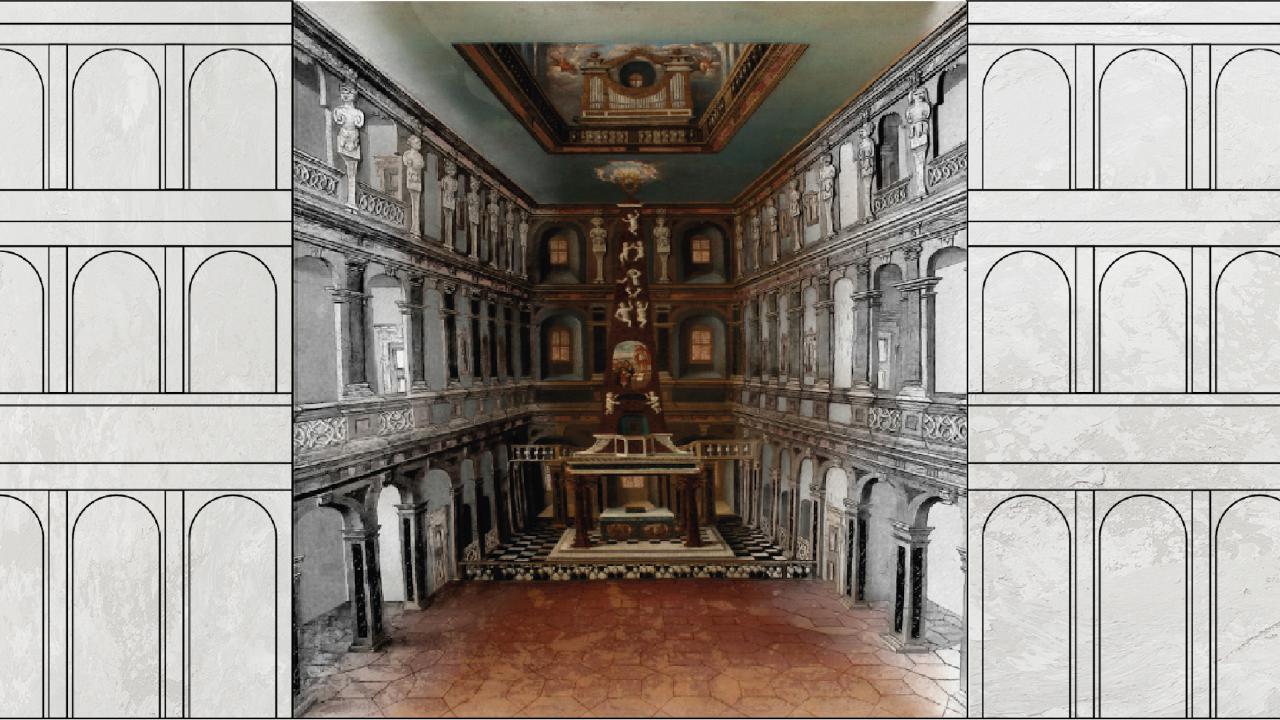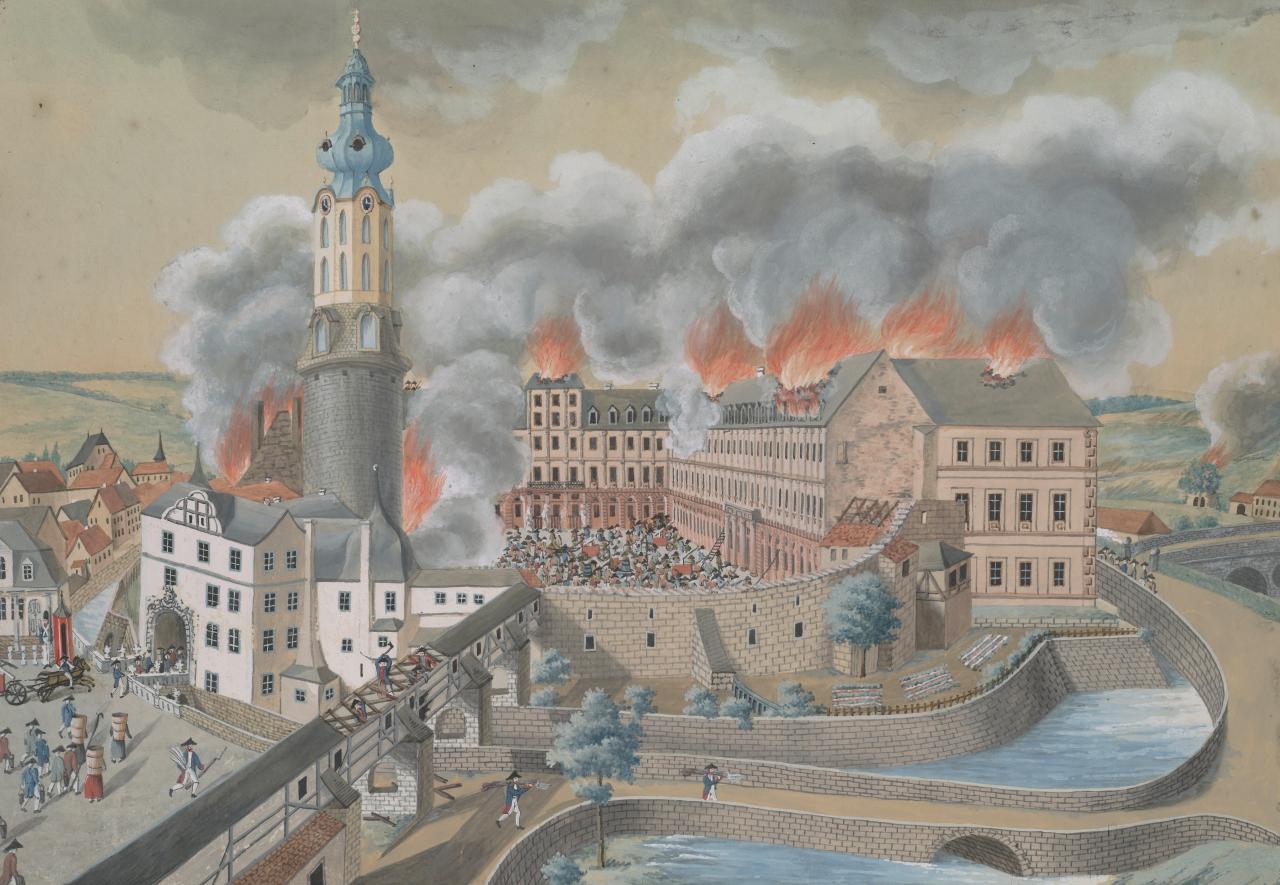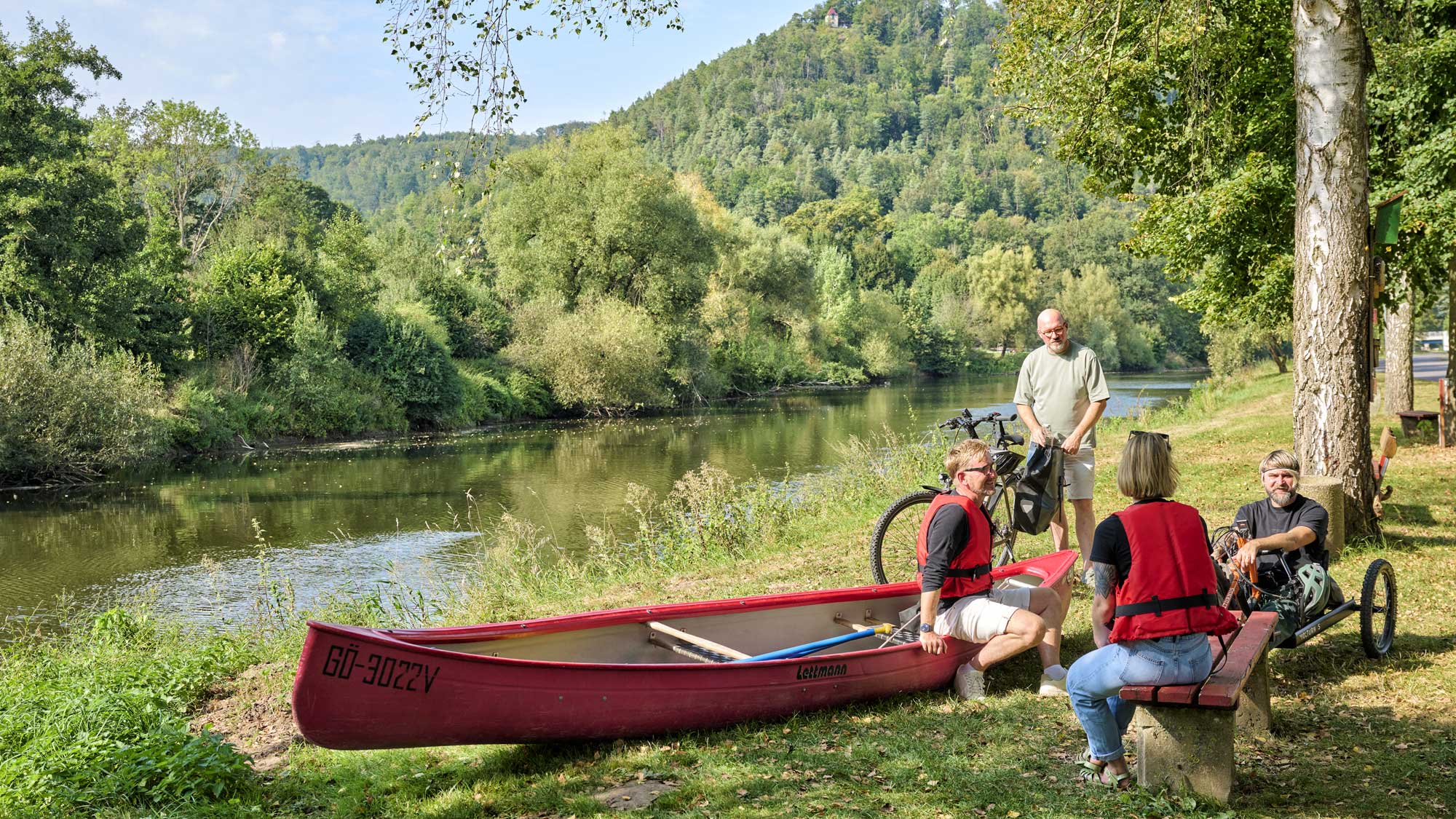You're in the right place! Whether in nature, in the middle of the city, for families, in the countryside, historic or traditional: among Thuringia's TOP hosts, everyone will find exactly the right address.
The historical background
The Weimar Himmelsburg
The music that was played was part of a concept of ascension between earth and heaven. The name ‘Path to the Castle of Heaven’ was to be understood both architecturally and acoustically. (1)
Acoustics reflecting the architecture
The unusual architecture of the castle chapel decisively influenced the sound in the room. Its acoustic quality also impacted the musical work of Johann Sebastian Bach. The gifted composer was appointed concertmaster in Weimar in 1714. This meant that every four weeks he had to write a church cantata for the respective Sunday service. (2)

Castle chapel around 1660 including visualisation ©graphics: Christian Richter, photo: Anne Levin, Klassik Stiftung Weimar
Bach wrote all the cantatas of his Weimar period for the unusual church space with a quasi-invisible organ loft. (3) The first cantata to be performed was ‘Himmelskönig, sei willkommen’ (BWV 182). It was first performed on Palm Sunday, 25 March 1714 in the Weimar castle chapel. (4) The compositional structure and tonal language of these cantatas can only be fully understood in combination with the spatial experience. (5)
It should be noted, however, that at the present time only speculations can be made about the appearance of the Himmelsburg. Only on the basis of a few paintings, historical ground plans and comparative objects from identical periods can the appearance of the castle chapel be reconstructed to some extent.
Scientific facts
The history of the Weimar City Castle
The castle and its chapel were destroyed in a devastating fire in 1774. Only the surrounding walls and historical building drawings were preserved. (6) Reconstruction began 15 years later.

The residential castle of Weimar after the fire in 1774 © Klassik Stiftung Weimar
Read about the entire eventful past of the castle on the pages of the Klassik Stiftung Weimar.
Currently, the castle closed is for renovation and will gradually be reopened to the public as work progresses. The renovation project is slated for completion by 2030. It will feature an entirely new exhibition which will provide access to previously cordoned-off sequences of rooms.
As the new, dynamic centre of the Klassik Stiftung Weimar, the City Castle will serve as a visitor centre, debate forum and educational venue. In addition to lively discussions on contemporary issues, visitors can look forward to fascinating stories which have taken place at court and “behind the scenes”.
More information on the conversion can be found here.
Johann Sebastian Bach in Weimar
Quellen:
(1) Vgl. Dr. Anselm Hartinger, Musikwissenschaftler und Musiker, Direktor des Stadtgeschichtlichen Museums Leipzig.
(2) Vgl. Wikipedia, https://de.wikipedia.org/wiki/Johann_Sebastian_Bach#Weimar_(1708–1717).
(3) Vgl. Auszug Programmheft TBW, S. 12 i. V. m. Dr. Anselm Hartinger.
(4) Vgl. Jörg Arnold, 2005, Diplomarbeit "Raumakustische Rekonstruktion der Schlosskapelle des Weimarer Residenzschlosses im Zustand von 1658 - 1774", S. 21.
(5) Vgl. Dr. Anselm Hartinger, Musikwissenschaftler und Musiker, Direktor des Stadtgeschichtlichen Museums Leipzig.
(6) Vgl. Jörg Arnold, 2005, Diplomarbeit "Raumakustische Rekonstruktion der Schlosskapelle des Weimarer Residenzschlosses im Zustand von 1658 - 1774", S. 39-40.
Did you like this story?
Maybe, you'll like this too ...












